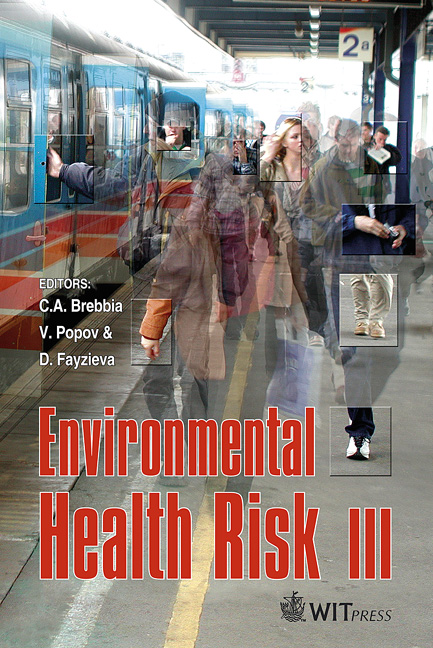Environmental Health Risk By Sly Pollution: Applied Research On Radon Inside Public Buildings
Price
Free (open access)
Transaction
Volume
9
Pages
10
Published
2005
Size
898 kb
Paper DOI
10.2495/EHR050191
Copyright
WIT Press
Author(s)
S. Lo Nigro, F. Patania, A. Gagliano & F. Nocera
Abstract
Radon (Rn) is a polluting gas coming from radioactive decays and it is not detectable by human senses as it is colourless, tasteless and odourless. Apart from the underground position of radioactive sources of such gas, it is able to cover very long paths through subsoil and to the surface at considerable distances from the underground starting points. Whenever it surfaces in the interior of buildings, passing through foundation structures, then it produces a sly pollution as its presence will be discovered only when it has harmed people. Owing to previous peculiarities, there is a considerable health risk in the case of such indoor air pollution and this risk can be mitigated only by precautionary measures as are used to periodically control Radon concentrations in indoor environments which are suspected to be polluted by Radon and then to set in action some techniques to reduce indoor radon concentration in polluted buildings. Beginning to face the Radon problem, the Province of Ragusa (Italy) set in action experimental research to discover the real concentrations of Radon in some public buildings in Ragusa town (ex IPAI building), Modica Town (technical Institute \“Archimede”) and Scicli Town (Civil Protection Agency Building). For reasons of space the aim of paper is to show results only for the IPAI building: - The techniques and the equipment used to survey the gas concentrations. - The analysis of results of the campaign of measurements that permit one to point out the reliability of methods as a function of the kinds of equipment. - The proposed techniques of mitigation of pollution. Keywords: radon, indoor pollution, measurements and control.
Keywords
radon, indoor pollution, measurements and control.





